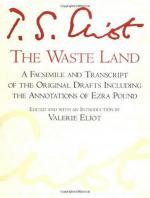|
This section contains 289 words (approx. 1 page at 400 words per page) |

|
1920s: In the aftermath of World War I, which introduced modern weapons and the psychological horrors of trench warfare, some people in the United States and Europe become shocked and disillusioned and turn away from religion.
Today: In the aftermath of the terrorist attacks on New York City and Washington, D.C, on September 11, 2001which introduced commercial airliners as a new type of airborne explosivesome people turn to religion to cope with the horror and disbelief.
1920s: Although major military operations in World War I ended in 1918, the United States and the world continue to deal with the physical, financial, and psychological costs of the war. The U.S. Congress does not declare World War I officially over until July 2, 1921.
Today: Although U.S. President George W. Bush declares major military operations in Iraq over on May 1, 2003, the United States and the world...
|
This section contains 289 words (approx. 1 page at 400 words per page) |

|




